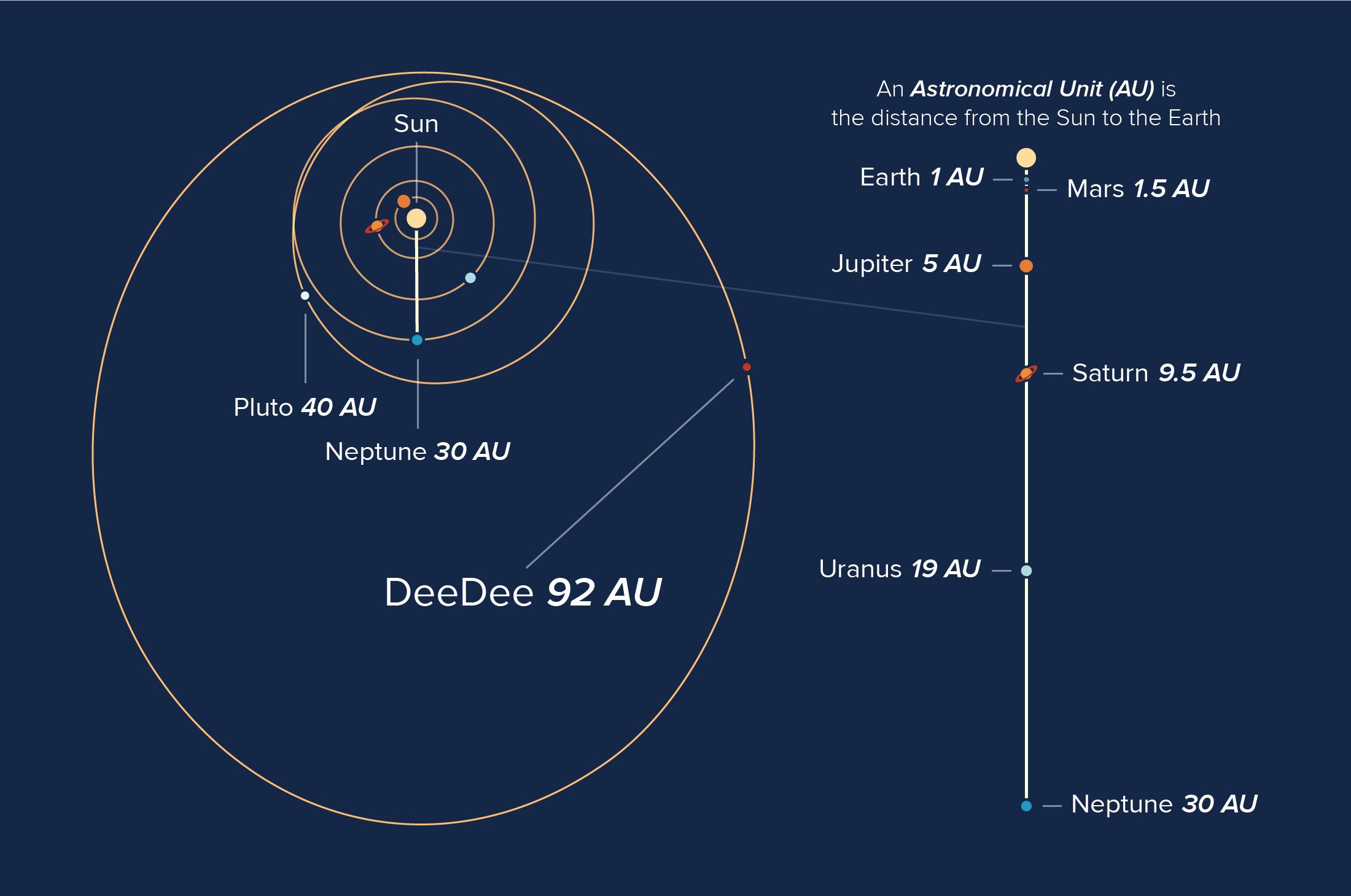A Distant Orb Named DeeDee Is Reigniting the Planet Definition Debate
If Pluto and DeeDee aren’t planets, then maybe Earth isn’t either.

The International Astronomical Union (IAU) triggered one of the biggest ever cosmic controversies when they changed the definition of a planet in 2006, kicking Pluto off the list of the most important orbs in our solar system. Planetary scientists and the public weren’t pleased. But a recently discovered Kuiper belt object 8.6 billion miles away from Earth is the latest challenge to the restrictive redefinition.
That discovery, a “distant dwarf” nicknamed “DeeDee” (that’s 2014 UZ224, officially), is a tiny, icy orb that astronomers spotted with the Atacama Large Millimeter/submillimeter Array, a telescope in Chile. It clearly fits two of the three IAU qualifications for planethood. DeeDee is about 395 miles across, just massive enough to form a sphere, thanks to gravity. DeeDee also orbits the sun and isn’t a satellite like the moon, but it hasn’t “cleared the neighborhood around its orbit,” which it shares with asteroids and other bits of space stuff. Pluto fits the same criteria, so by the IAU’s standards, both Pluto and DeeDee are dwarf planets.

But, some argue, if a few nearby asteroids can knock a planet down to dwarf status, then Earth is in the same boat. NASA has observed more than 15,000 asteroids that orbit the sun at roughly the same distance as the Earth. Even giant Jupiter hasn’t truly cleared its neighborhood—around 6,000 asteroids occupy its orbital path.
Over a decade after the definition change, the IAU and some big names in astronomy are not backing down from Pluto’s demotion. So planetary scientists mostly ignore the IAU’s definition. They still treat Pluto (and Earth) like full-fledged planets. A group of scientists made up of six members of NASA’s New Horizons team even proposed a new definition at the Lunar and Planetary Science Conference in March. It’s a lot more inclusive: any round object that hasn’t undergone nuclear fusion, but that would include moons too, putting our solar system’s planetary population at more than 110.
That’s a few too many planets to fit into a tidy mnemonic—“My Very Educated Mother Just Served Us Nachos”—but scientists behind the new definition don’t see that as a problem. It’s no different, they argue, than learning just a few of the 88 constellations or the 118 elements of the periodic table. That might make DeeDee the seaborgium of the solar system.











Follow us on Twitter to get the latest on the world's hidden wonders.
Like us on Facebook to get the latest on the world's hidden wonders.
Follow us on Twitter Like us on Facebook